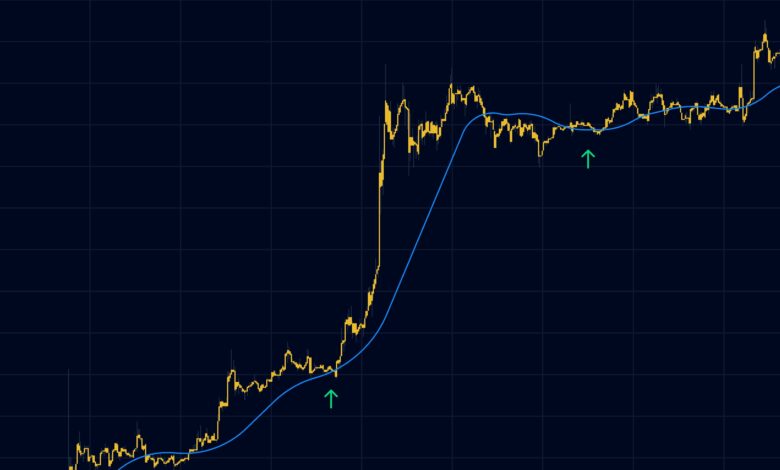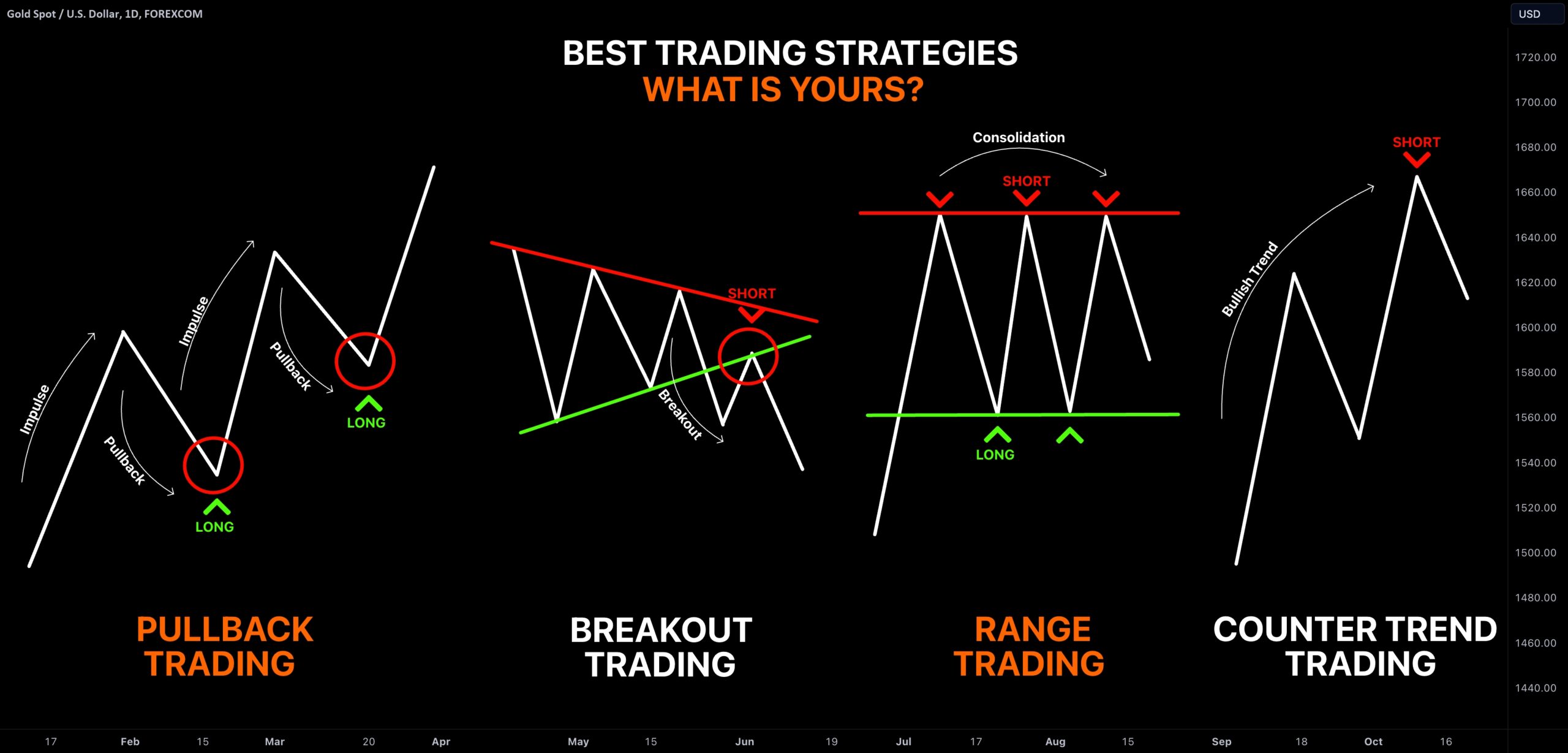5 Best Crypto Trading Strategies for Maximum Profit
The crypto Trading market is dynamic, volatile, and filled with opportunities for traders who know how to navigate it successfully.

The cryptocurrency market is dynamic, volatile, and filled with opportunities for traders who know how to navigate it successfully. If you’re looking to maximize profits from crypto trading, you need a strategic approach. In this article, we’ll delve into the five best crypto trading strategies that can help you achieve the highest returns while managing risk effectively. Whether you’re new to crypto or an experienced trader, these strategies will serve as valuable tools in your trading journey.
1. Day Trading: Capitalizing on Short-Term Price Movements
Day trading is one of the most popular strategies in the crypto world. This involves buying and selling cryptocurrencies within a single trading day to take advantage of short-term price fluctuations. Day traders aim to profit from the volatility of the market by opening and closing positions multiple times in a day. Given the high volatility of crypto assets, day trading offers excellent opportunities for profit if executed correctly.
How Day Trading Works:
- Market Research: Successful day traders spend a lot of time researching and analyzing the crypto market. They use technical analysis to identify patterns, trends, and key indicators that signal potential price movements.
- Timing: Timing is crucial in day trading. Traders must be quick to react to market changes, buying low and selling high within short timeframes.
- Tools: Many day traders use advanced tools like trading bots and charting software to track price movements and execute trades quickly.
Pros:
- Quick profits due to frequent trades
- No overnight risk exposure
- High profit potential from short-term price swings
Cons:
- Requires a lot of time and attention
- High stress and potential for loss
- Can incur high transaction fees due to frequent trading
Tip:
Focus on liquid markets and cryptocurrencies with large trading volumes to reduce slippage and ensure smoother transactions.
2. Swing Trading: Capturing Medium-Term Trends

Swing trading is a strategy that aims to capture gains in a cryptocurrency over a period of days or weeks. Unlike day trading, which involves very short-term trades, swing trading is based on riding the wave of medium-term price trends. Traders seek to identify trends and enter positions early in the trend, holding the asset for several days or even weeks before selling when the market shows signs of reversing.
How Swing Trading Works:
- Trend Identification: The primary focus in swing trading is to identify a price trend—whether upward or downward. Traders use technical analysis tools such as moving averages and Fibonacci retracements to spot trends.
- Entry and Exit Points: The key to successful swing trading is identifying the right entry point to buy and exit point to sell. This often involves using stop-loss orders to protect from large losses in case the market moves against your position.
- Risk Management: Swing traders typically use stop-loss orders and risk management techniques to protect their capital, as the market can reverse unexpectedly.
Pros:
- Less time-consuming than day trading
- Potential for substantial profits over the medium term
- Less stressful compared to day trading
Cons:
- Requires understanding of technical indicators and chart patterns
- Exposure to market volatility for longer periods
- Can experience significant drawdowns if market trends reverse unexpectedly
Tip:
In swing trading, it’s important to keep emotions in check. Let the market tell you when to enter and exit, rather than acting impulsively.
3. Scalping: Making Profits from Small Price Movements
Scalping is one of the fastest and most aggressive trading strategies. The goal of scalping is to make small profits from frequent, small price movements throughout the day. Scalpers often execute dozens or even hundreds of trades in a single day. This strategy is best suited for those with a high tolerance for risk and the ability to make quick decisions.
How Scalping Works:
- Small Price Moves: Scalpers focus on cryptocurrencies that have high liquidity and narrow spreads. They take advantage of small price fluctuations, executing trades within seconds or minutes.
- High Frequency: Scalping requires executing many trades, often with high leverage. Traders look for a small price movement of a few percentage points and then sell quickly for profit.
- Technical Indicators: Scalpers rely heavily on technical indicators such as Bollinger Bands, moving averages, and volume to identify trade opportunities.
Pros:
- Quick returns from small movements
- Less exposure to market risk over the long term
- Suitable for traders who enjoy fast-paced environments
Cons:
- Requires high liquidity and low spreads
- Frequent transactions can incur significant trading fees
- High stress and requires a lot of attention
Tip:
Scalping is best for traders who can make quick decisions and stay focused for long hours. Avoid trading during periods of low market activity, as this can lead to slippage and unpredictable price movements.
4. Position Trading: Long-Term Strategy for Holding Crypto
Position trading is a long-term strategy that focuses on holding a cryptocurrency for weeks, months, or even years, based on the belief that the price will appreciate significantly over time. Position traders rely on fundamental analysis to choose which cryptocurrencies to invest in, often looking for strong projects with solid teams, good use cases, and potential for long-term growth.
How Position Trading Works:
- Fundamental Analysis: Position traders analyze the underlying factors driving a cryptocurrency’s value. They evaluate aspects such as the project’s team, technology, partnerships, and adoption to assess its long-term potential.
- Low Frequency of Trading: Unlike day trading and swing trading, position traders typically make fewer trades and focus on holding assets over a longer period.
- Patience and Discipline: Successful position traders have the patience to withstand short-term price fluctuations and wait for the market to realize the potential of their investments.
Pros:
- Lower stress compared to short-term trading
- Ability to profit from long-term market growth
- Lower transaction costs due to infrequent trading
Cons:
- Exposure to long-term market fluctuations
- Requires strong belief in the assets’ long-term potential
- May miss out on shorter-term opportunities
Tip:
When practicing position trading, ensure you perform thorough due diligence on the cryptocurrency projects you choose to invest in. Keep an eye on industry news and project updates to stay informed.
5. Automated Trading: Using Bots to Maximize Efficiency
Automated trading uses bots or algorithms to execute trades based on predefined criteria. These bots can help traders maximize profits by executing trades at optimal moments without the need for manual intervention. Automated trading is particularly useful for those who do not have the time or experience to monitor the markets continuously.
How Automated Trading Works
- Predefined Rules: Automated trading systems work based on a set of rules or algorithms that are programmed by the trader. These rules could be based on technical indicators, price movements, or market news.
- 24/7 Operation: Currency markets operate 24/7, and bots can execute trades at any time, ensuring you never miss an opportunity to profit.
- Backtesting: Traders can backtest their automated strategies against historical data to see how well the algorithm would have performed in the past before deploying it in live markets.
Pros:
- Eliminates emotional decision-making from trading
- Available 24/7, allowing you to take advantage of market opportunities anytime
- Can handle large volumes of data and execute trades quickly
Cons:
- Risk of malfunction or incorrect programming
- Bots can sometimes execute trades at unfavorable prices during periods of high volatility
- Requires initial setup and continuous monitoring to ensure the strategy is effective
Tip:
Start with a well-established trading bot and test it on demo accounts before deploying it in live markets. Always keep an eye on its performance to ensure it is meeting your expectations.
Conclusion
Mastering crypto trading requires a strategic approach, and the five strategies discussed—day trading, swing trading, scalping, position trading, and automated trading—offer different ways to capitalize on the cryptocurrency market. Each strategy has its own set of advantages and risks, and choosing the right one will depend on your trading style, goals, and risk tolerance.
By educating yourself, practicing diligent risk management, and staying informed about the market, you can significantly increase your chances of achieving maximum profits in the crypto space. Always remember that trading is not without risks, so be prepared to adapt and learn from both your successes and failures as you build your crypto trading portfolio.





